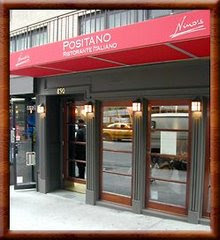 On first glance, it appears that Turtle Bay has nothing in common with Lower Manhattan.
On first glance, it appears that Turtle Bay has nothing in common with Lower Manhattan.However, after taking a tour of the World Trade Center, I realized New Yorkers who have lived here for over seven years have one thing in common despite their neighborhood boundaries— 9/11.
After speaking with Manny Papir, a survivor of the attacks, I left knowing that the feelings and sentiments related to 9/11 are universal. Whether you were in New York or California at the time, speaking to a survivor makes the entire experience real. Manny is able to speak about his experience without getting teary, although several times he gets the chills when speaking about loved ones who passed away.
Sept. 11, 2001 happened to also be an election day, and so Manny was late getting in to Lower Manhattan because he was voting in Brooklyn. At the time, he was the Deputy Chief of Staff for Mayor Rudy Giuliani and was working with Giuliani four days a week. By the time he got in to Lower Manhattan, he saw both towers collapse to the ground, and by 2 p.m. was with Giuliani figuring out how to begin managing the fear and chaos of rescue teams and New Yorkers. In that moment, he lost all senses but sight. He could not retell what he smelled or heard that day, but has only visual memories of those chaotic, blurred morning hours.
What really made the experience come to life were the personal stories. Both Manny and our tour guide, John Henderson, told story after story about friends and families, many about survivors, and other stories about victims. The World Trade Center Tribute Building also had footage and artifacts saved from that day, with pictures and quotes of people retelling what they saw and experienced.
Both John and Manny said the worst part about that day and the weeks to follow were the scattered body parts. From the attack, 2,751 people died, but rescue teams have found over 21,000 body parts, with fewer than 200 of those being identifiable. Sadly, of the 343 fireman that died that day, only 12 bodies were found whole. The World Trade Tribute founder’s son was one of the 12 firemen whose bodies were in one piece.
It is stories like these that make the experience real for everyone—no matter what neighborhood, borough, city or state you were in that day. Despite the horrific circumstances, it was one day that people crossed neighborhood borders and came together from all boroughs to help and support one another.










